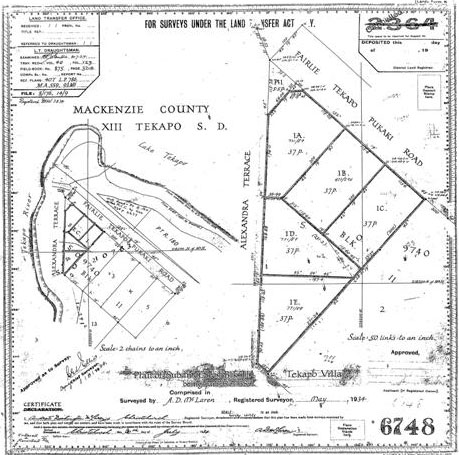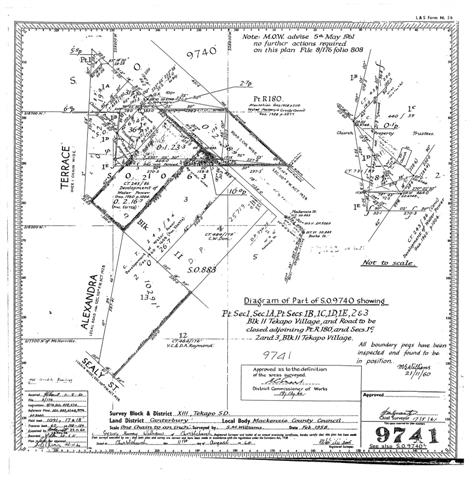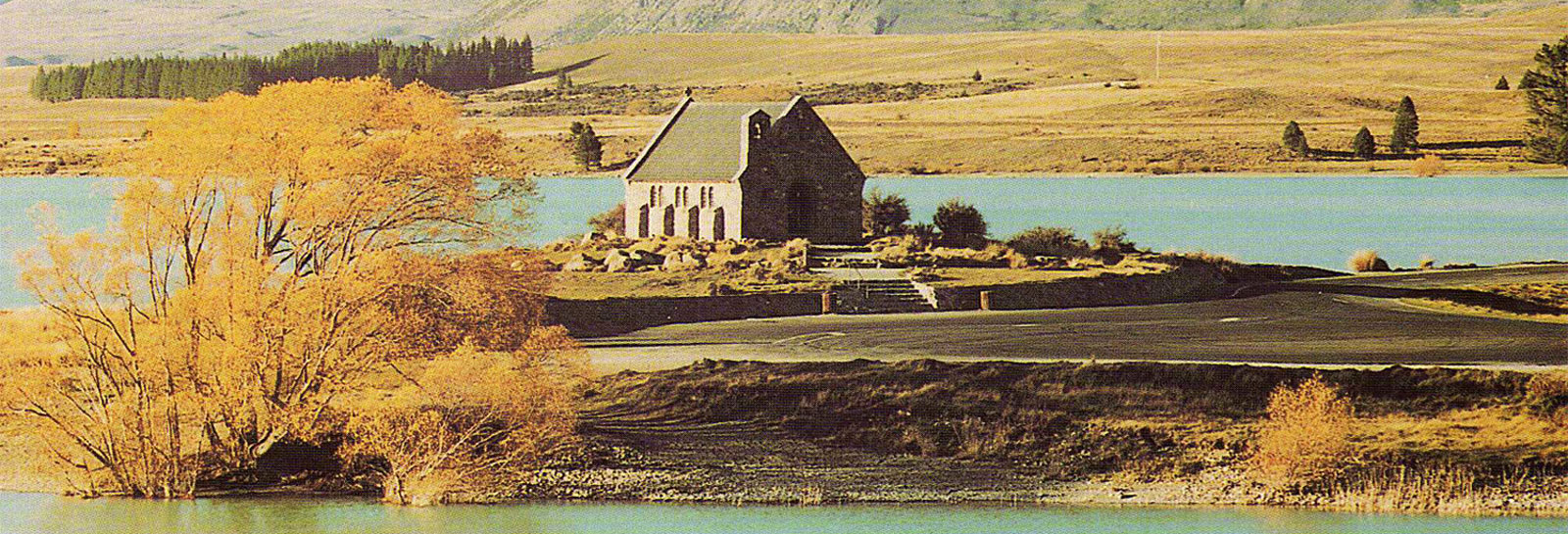A History of the Gifting of the Land
By Lucy Nanson
My mother Betty Nanson (nèe; Murray) came from a well known Mackenzie Country family who have farmed for generations in this area. Her father George Murray decided to buy land along the frontage of Lake Tekapo when it first became available for sale in 1908. He then placed several of these sections in his children's names. Betty's sister was given legal title to a lake-front section on which the old Pennscroft cottage was eventually built and a section beside it as well.
George's youngest child Betty was not born until 1911 so she was the last to be given land on the edge of Lake Tekapo by her father. This came about after a decision at a meeting in1933 to build a church beside Lake Tekapo. When suitable land was advertised for sale in May 1934, George Murray decided to attend this auction. The triangle of land comprised five sections [1A-1E] facing Lake Tekapo and the Tekapo River which made the site particularly suitable for the proposed church with its uninterrupted views across the lake to the mountains. There were also fishermen attending the auction who were interested in buying sections of this land for building baches which would have made the immediate surrounding area for the church less attractive. George Murray was therefore determined to outbid the fishermen and buy the full triangle of land "to save the possibility of the proposed site being built around by others in an undesirable way" [The Tekapo Building Committee Minutes 11 October 1934]. His final bid was successful and he placed all five land-titles in his youngest daughter's name. Since Betty Murray had recently married Gerald Nanson each of the land-titles stated the following: "Betty Wilmot Nanson wife of Gerald Leighton Nanson of Hokitika, Civil Engineer" It is interesting to note that it would appear a married woman in that era was unable to legally own land in her own right without being described on the land title as the "wife of..."
The plan was for the Church of The Good Shepherd to be built on section 1A with its uninterrupted views of the lake and the mountains. This would have enabled Betty to retain the lake-view sections of 1B and 1C, and the land along the river's edge of 1D and 1E for her own use. Unfortunately complications arose in regard to section 1A, for it was soon discovered that the Ministry of Works was planning to raise the lake by approximately 10 metres which would have submerged the original area chosen for the church. These unexpected complications meant Betty needed to be approached by the Tekapo Building Committee for the purchase of her lake-front section of 1C [along with a small portion of 1D] in order for them to reposition the proposed church. An amount of twenty five pounds was paid to her in November 1934 for this land area. Then to ensure no other buildings were placed nearby, a Mr Peter Hope from England kindly donated the cost for the Church purchasing section 1B from Betty in May 1935. She was paid twenty pounds for her last remaining lake-front section. In spite of the additional complications from repositioning the church site, there is no doubt from the Minutes of the Tekapo Building Committee meetings that the Murray family in the Mackenzie Country were wanting to ensure the cost of the actual site for the church would be gifted by them.
 |
 |






